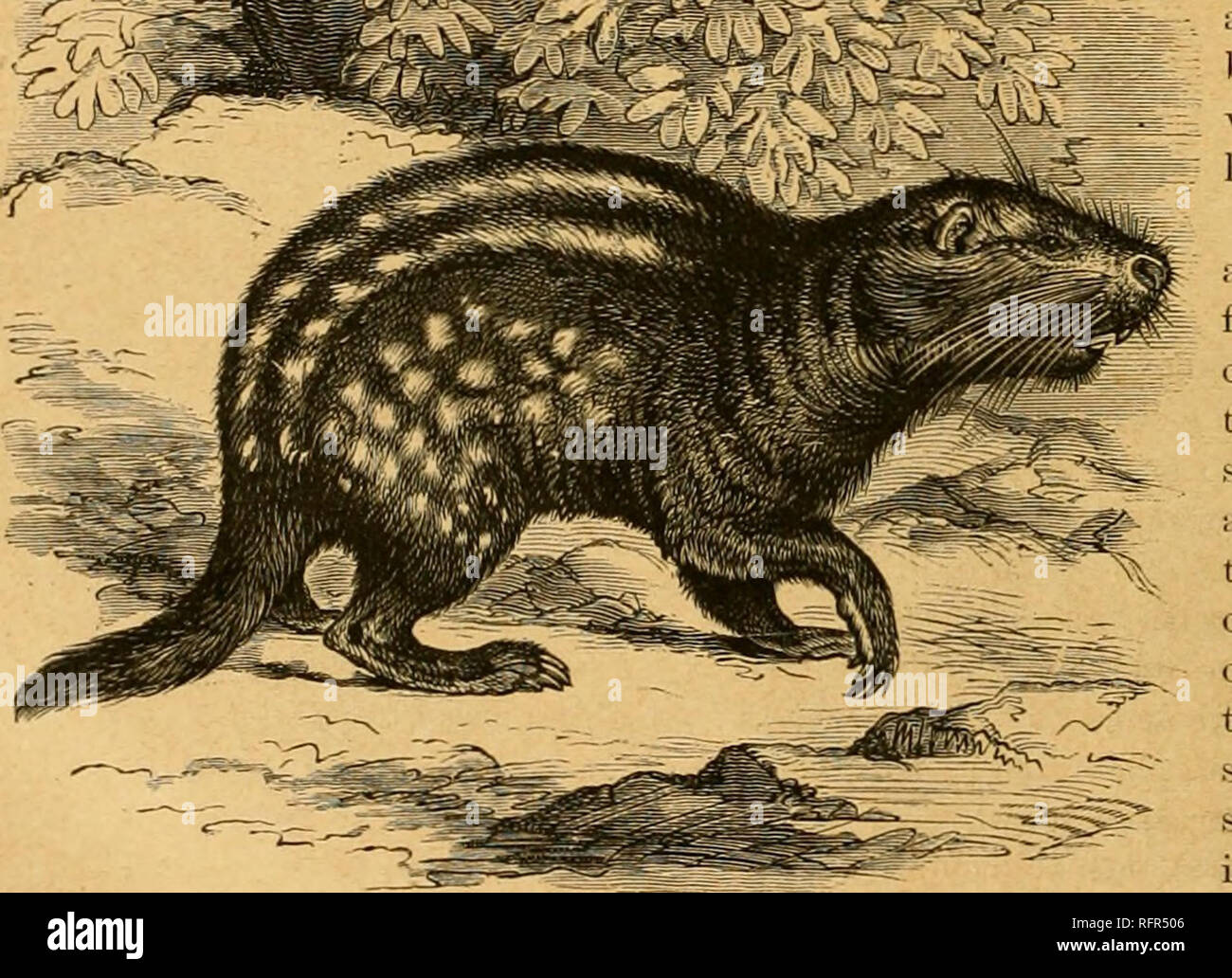. Cassell's natural history. Animals; Animal behavior. 142 yATUMAL IIISTOIlT. of the body. In its liabits the Paca very much resembles the Agouti. It usually lives singly, or sometimes in pairs, on the boi-ders of the forests, or near the banks of rivers, taking up its abode during the day either in a liole at the root of some tree, or in a burrow excavated by its own labour, which is generally carried to a depth of four or five feet. Its food consists of the leaves, fruits, and flowers of various plants, and, like the Agouti, it occasionally does mischief in the corn-fields and gardens. The f

Image details
Contributor:
Book Worm / Alamy Stock PhotoImage ID:
RFR506File size:
7.2 MB (498.7 KB Compressed download)Releases:
Model - no | Property - noDo I need a release?Dimensions:
1857 x 1346 px | 31.4 x 22.8 cm | 12.4 x 9 inches | 150dpiMore information:
This image is a public domain image, which means either that copyright has expired in the image or the copyright holder has waived their copyright. Alamy charges you a fee for access to the high resolution copy of the image.
This image could have imperfections as it’s either historical or reportage.
. Cassell's natural history. Animals; Animal behavior. 142 yATUMAL IIISTOIlT. of the body. In its liabits the Paca very much resembles the Agouti. It usually lives singly, or sometimes in pairs, on the boi-ders of the forests, or near the banks of rivers, taking up its abode during the day either in a liole at the root of some tree, or in a burrow excavated by its own labour, which is generally carried to a depth of four or five feet. Its food consists of the leaves, fruits, and flowers of various plants, and, like the Agouti, it occasionally does mischief in the corn-fields and gardens. The female produces only one, or at most two, young at a birth. The Paca swims well, and can cross even a broad river in this way. Its flesh, like that of the Agouti, is very well flavoured, and is consumed both by natives and Europeans. FAJIILY XV.—DINOIIYID.E. This family has been founded for the reception of a single species, of which only a single specimen has hitherto been obtained. It is described by Professor Peters under the name of Dinomyi Jiranichii. In its external appearance it closely resembles the Paca {Cuiloyeiii/s paca), hu'^ may at once be distinguished from that animal by its possession of only four toes both before and behind. The ears aie short and rounded ; the upper lip deeply cleft; the incisors very broad; the molars four on each side, and divided into transverse plates by folds of enamel ; the clavicles are imperfect; and the tail of moderate length and well clothed with hail-. The animal, which inhabits the high mountain regions of Peru, is of the size of the Paca, or about two feet long, exclusive of the tail, which measures rather more than nine inches. Its general colour is grey, produced by the sprinkling of white among nearly black haii-s ; and on each side of the body are numerous large white spots, of which the uj)per ones nearly run together, so as to fonn two longitudinal bands. The extremity of the tail is black. The only known example of this R